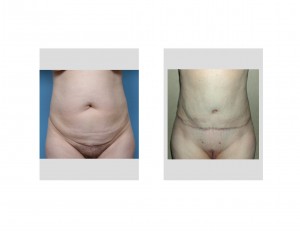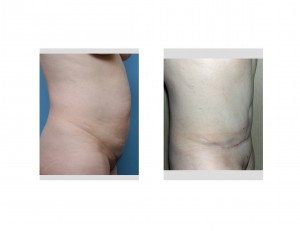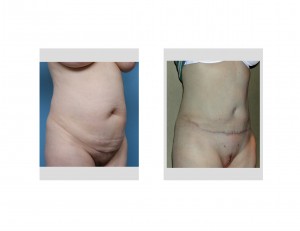Background: The tummy tuck (abdominoplasty) is one of the most popular of all the body contouring procedures. Whether helping to reverse the effects of pregnancy or that of weight loss, it achieves what no amount of diet and exercising can do…the removal of loose/stretched out abdominal skin. But it does so with the aesthetic trade-off of a lengthy scar and a significant recovery.
For some patients the amount of abdominal overhang or fullness makes the decision to buy a scar to get rid of it fairly easy. For others that decision is more difficult as their abdominal problems vs the scar may not justify that substitution. In this situation they may opt for a smaller scar with a mini-tummy tuck, or even liposuction, even though the result will not compare to what a full tummy tuck can achieve.
Recovery from a tummy tuck is often stated to be 2 to 3 weeks. It would be kind to say that prediction is a woeful underestimation for the vast majority of patients. The definition of recovery highly depends on what one interprets as recovery. Is it being able to return to work? It is comfortable enough to resume working out? Is it feeling absolutely perfectly normal? Estimates for those criteria of recovery would 2, 4 and 6 weeks respectively.
Case Study: This 38 year-old female wanted to get rid of her ‘full belly’. She was not overweight, although 15 to 20lbs more than what she was in high school. Despite her best efforts at diet and exercise (everyone has their own limit of what they can do) she could not budge the way her abdomen and waistline looked. She felt if she had a tummy tuck she would be able to get ‘over the hump’ of getting a better abdominal shape and lose some weight.


Case Highlights:
1) A tummy tuck does a good job of removing extra skin and fat from the lower abdomen but does so at the ‘price’ of a long scar.
2) The greatest flattening effect of a tummy tuck is in the lower half where the tissue excision takes place. In some patients some upper abdominal fullness will persist as tissue is stretched out in this area but not removed.
3) Most patients underestimate a tummy tuck recovery. Do not expect to return to work for 2 to 3 weeks or resume working out for 4 to 6 weeks.
Dr. Barry Eppley
Indianapolis, Indiana



